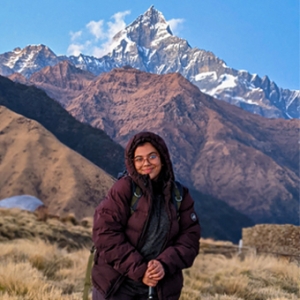Introduction to Tilicho Lake Trek
The Tilicho Lake Trek, nestled within the Annapurna Conservation Area of Nepal, presents an extraordinary journey spanning approximately 14-16 days. Commencing from the town of Besisahar, the trek's allure lies not only in its challenging terrain and high altitudes but also in its diverse landscapes.
Trekkers traverse through verdant forests, terraced fields, and alpine meadows, all while being treated to awe-inspiring vistas of snow-capped peaks such as Annapurna and Dhaulagiri. However, the pinnacle of this adventure is undoubtedly Tilicho Lake, perched at an astonishing altitude of 4,919 meters. This pristine body of water, with its deep turquoise hue, is a sight to behold amidst the rugged beauty of the Himalayas. As trekkers navigate through traditional villages inhabited by Gurung, Thakali, and Manangba people, they immerse themselves in the rich cultural tapestry of the region. Despite its moderate difficulty, characterized by steep ascents and variable weather, the Tilicho Lake Trek promises an unforgettable blend of adventure, natural splendor, and cultural immersion in the heart of the world's highest mountain range.
Whether you're an experienced trekker seeking the ultimate Himalayan adventure or a traveler yearning for a glimpse of Nepal's natural splendor, Tilicho Lake promises an experience like no other.
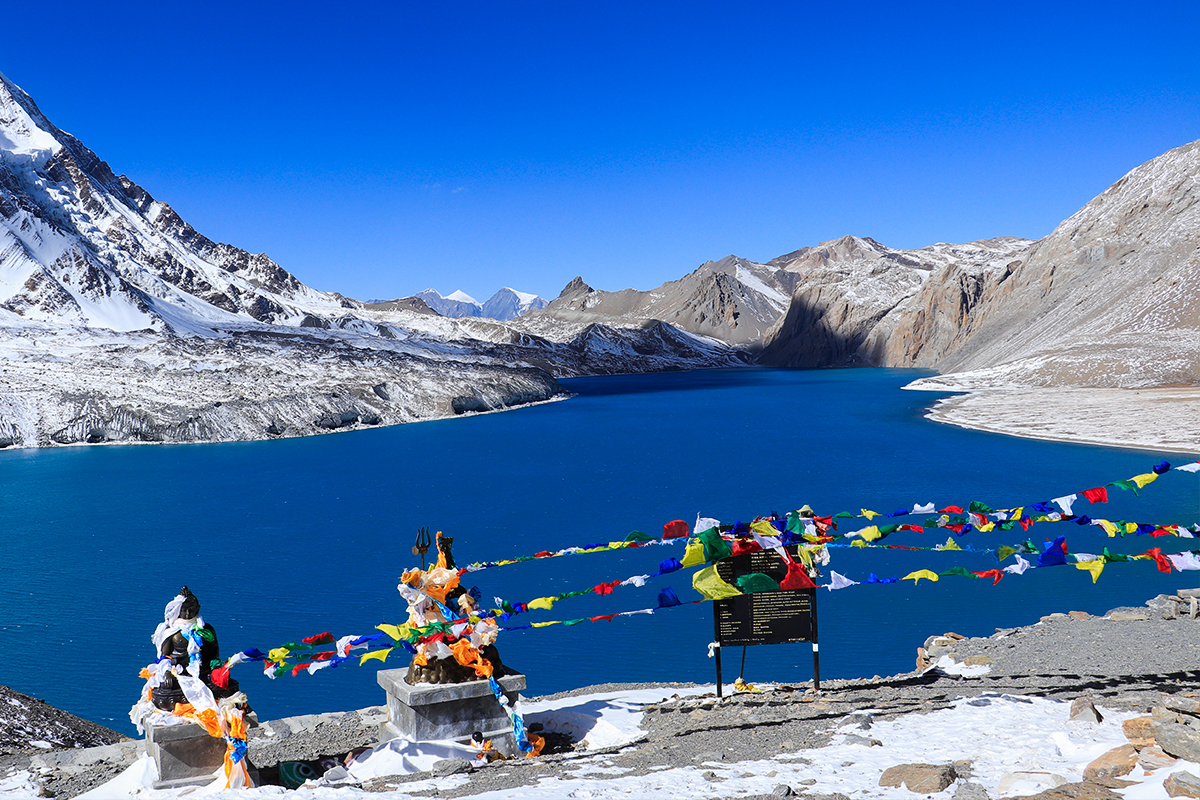
Highlights of Tilicho Lake Trek
- Immerse yourself in stunning landscapes, traversing through diverse terrain from forests to alpine meadows,
- Trekking through the yak pastures, grazing lands, and farmlands in Manang Valley,
- Short Hike to Gangapurna Lake Viewpoint
- Conquer the formidable Thorong La Pass, the highest mountain pass in the world, standing at an elevation of 5,416 meters (17,769 feet),
- Witness stunning sunrise and sunset vistas over the Himalayan peaks, painting the sky with a myriad of colors,
- Magnificent glacial lakes, natural waterfalls, Georges, and glacier rivers,
- Stunning views of beautiful snow-capped mountains like Annapurna range, Thorong Peak, Manaslu, Gorkha Himal, Lamjung Himal, Dhaulagiri, Tukuche Peak, Nilgiri, Machapuchhre, and many more,
- Experience the hospitality of local teahouse owners along the Tilicho Lake Trail, enjoying warm hospitality and authentic Nepali hospitality,
- Experience the lavish and modern luxury hospitality in Pokhara city.
.jpg)
How long is Tilicho Lake Trek?
The length of the Tilicho Lake Trek can vary depending on the specific route taken, starting point, side trips, and pace of the trekker. However, a typical Tilicho Lake Trek usually spans around 10 to 14 days in duration.
The trek typically starts from the town of Besisahar and follows various trails through the Annapurna region, eventually reaching Tilicho Lake. The return journey often follows a circuit route back to Pokhara via Jomsom.
The Annapurna Circuit with Tilicho Lake Trek typically covers a distance of approximately 230 kilometers (143 miles) in total. This distance includes the round trip from the starting point (usually Besisahar or Chame) to the completion point (often Pokhara) and any side trips or detours taken along the way.
Specifically, the distance to Tilicho Lake itself and back to the main trial is around 30-40 kilometers (18-25 miles) depending on the exact route taken. This includes the ascent to Tilicho Lake from the main trail and the return journey back to rejoin the Annapurna Circuit.
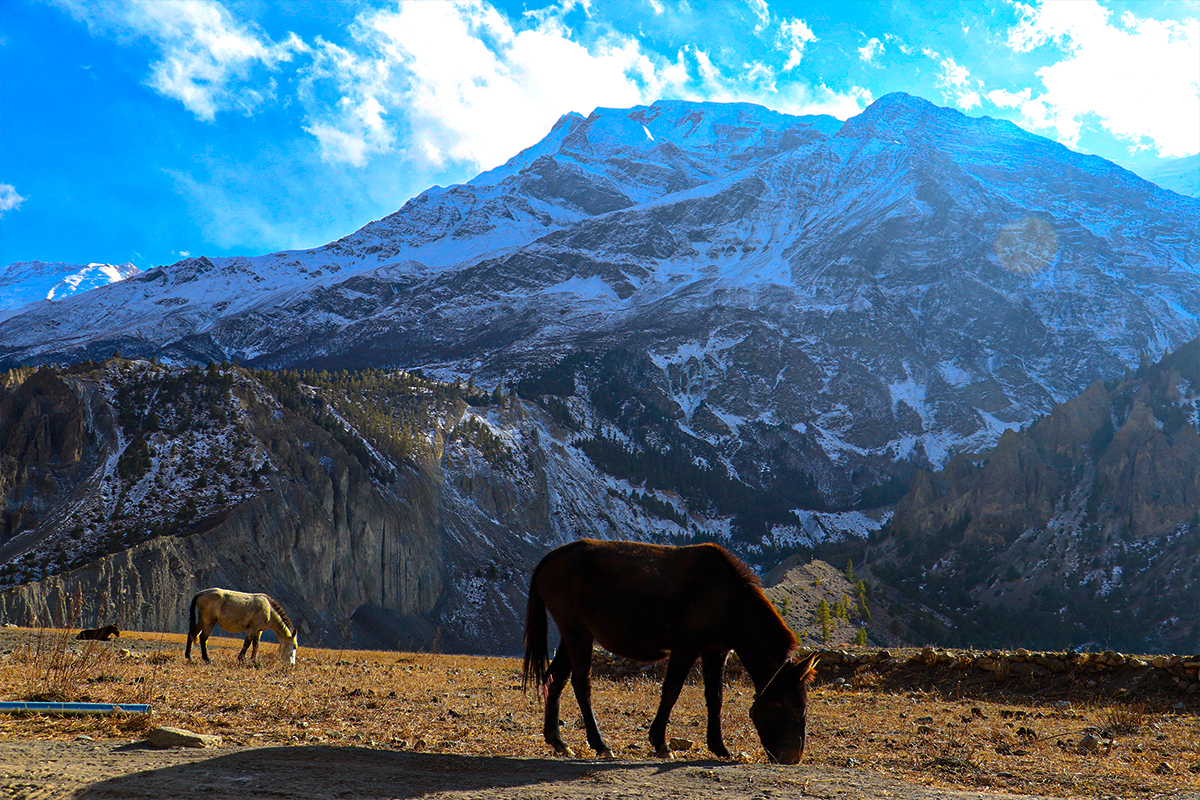
Normal Itinerary for the Tilicho Lake Trek
Day 1: Arrival in Kathmandu City and Transfer to Hotel
Day 2: Kathmandu City Tour, Pre-Trek Briefing, and Welcome Dinner
Day 3: Drive to Chame via Besisahar in Private Scorpio
Day 4: Trek to Upper Pisang
Day 5: Trek to Manang Village
Day 6: Acclimatization Day at Manang
Day 7: Trek to Shreekharka
Day 8: Trek to Tilicho Base Camp
Day 9: Trek to Tilicho Lake and trek back to Shree Kharka
Day 10: Trek to Yak Kharka
Day 11: Trek to Thorong Phedi
Day 12: Trek to Muktinath Village via Thorong La Pass
Day 13: Trek to Jomsom Village
Day 14: Drive back to Pokhara in Private Scorpio
Day 15: Fly back to Kathmandu
Day 16: Departure Day
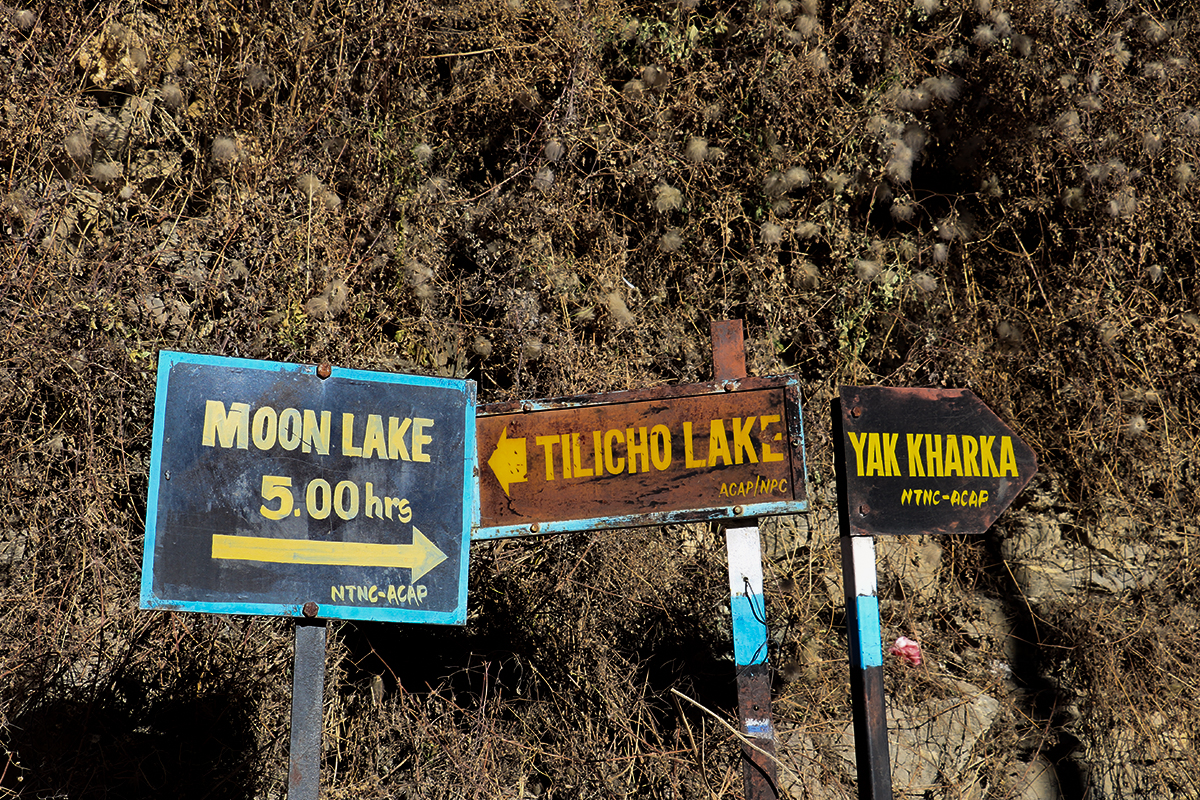
Trip Facts about Tilicho Lake Trekking
Aspects | Details |
|---|
| Region | Annapurna Conservation Area, Nepal |
| Starting Point | Besi Sahar |
Ending Point | Pokhara |
Duration | 14- 16 days |
Trekking Grade | Moderate to Strenuous |
Altitude of Tilicho Lake | 4,919 meters (16,138 feet) above sea level |
Maximum Altitude | Tilicho Pass: approximately 5,415 meters (17,769 feet) |
Accommodation | Teahouses and lodges along the route |
Permits Required | Annapurna Conservation Area Permit, TIMS (Trekkers' Information Management System) Card |
Best Time to Visit | Spring (March to May) and Autumn (September to November) |
Weather | Days are generally warm and sunny, nights can be cold; occasional rain or snowfall at higher elevations |
Highlights | Tilicho Lake, panoramic mountain views, diverse landscapes, cultural encounters, high altitude experience, Tilicho Pass crossing |
Nearby Attractions | Manang Village, Thorong La Pass, Jomsom, Muktinath Temple, Pokhara Valley |
Transportation | Bus or private vehicle from Kathmandu to Besisahar, and Pokhara back from trek endpoint |
Is Tilicho Lake Trek difficult?
The Tilicho Lake Trek presents a moderately difficult challenge for trekkers, characterized by several factors that contribute to its level of difficulty. At an altitude of approximately 4,919 meters (16,138 feet), Tilicho Lake itself is situated at a high elevation, posing a risk of high altitude sickness for those who ascend too quickly. So, Proper acclimatization is very crucial to mitigate the risk of high altitude sickness. Moreover, the trek entails traversing diverse terrain, including steep ascents, rocky trails, and potentially challenging river crossings. Trekkers should be prepared for physically demanding sections, especially as they ascend to higher elevations.
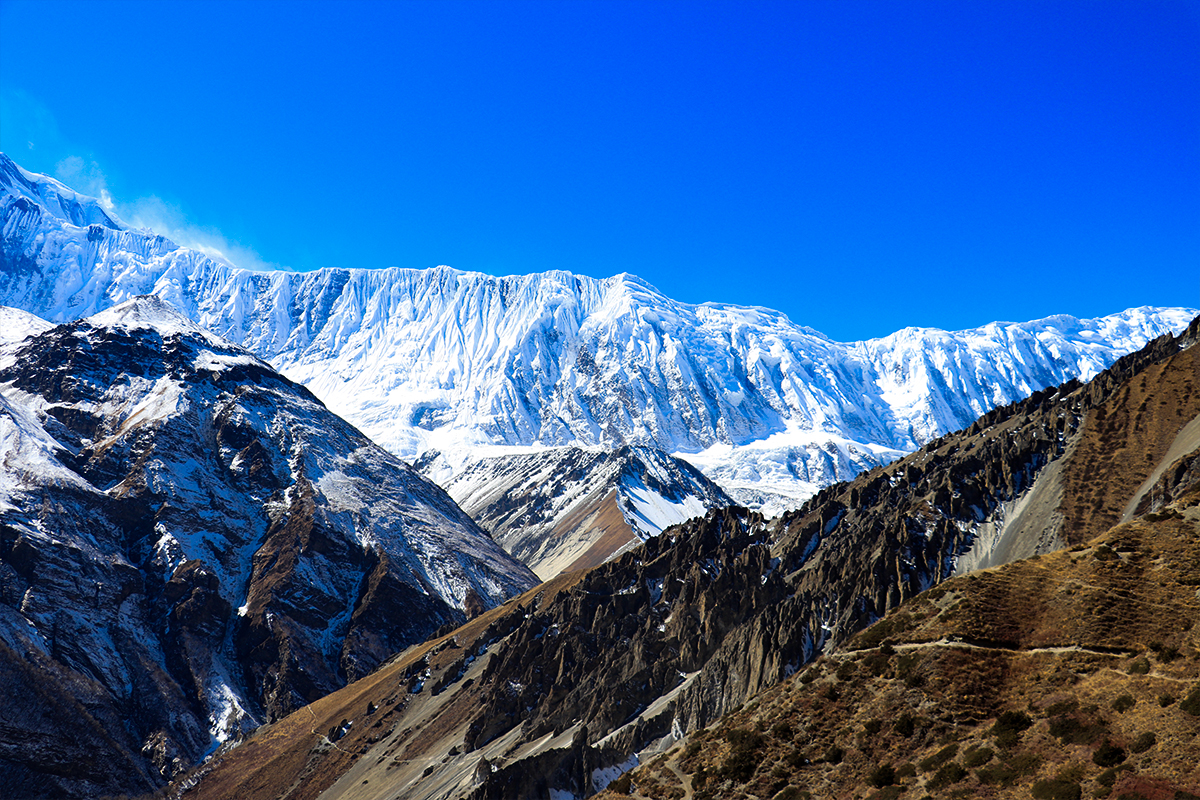
Weather conditions along the route can also be unpredictable, with temperatures fluctuating from hot and sunny during the day to cold and potentially snowy at higher altitudes. The duration of the trek, typically spanning around 14 to 16 days, and the consecutive days of walking can be physically taxing for some individuals, necessitating a reasonable level of fitness and endurance.
While the Tilicho Lake Trek presents its challenges, it's a rewarding adventure for those who are adequately prepared, offering stunning scenery, cultural encounters, and a sense of accomplishment in the heart of the Himalayas.
How much does it cost to go to Tilicho Lake?
The expense of the trip is dependent on a variety of factors. The Tilicho Lake Trek can usually cost you between $1800 to $2000. This includes transportation, permits for the trek, full-board meals (breakfast, lunch, and dinner), an experienced guide, porters, lodging, and a certificate for the journey. If you travel together in groups and use our set departure times, you can get significant discounts.
If you're traveling alone or with a group, the Tilicho Lake Trek is quite expensive. As you will hear from the trip leaders and porters, traveling in a group can be more economical than going on a private trek, which is tailored to your specific needs.
Is the trek to Tilicho Lake Trek dangerous?
Tilicho Lake Trek can be slightly dangerous in terms of its high altitude. However, with proper preparation and caution, it can be completed safely. The primary concern for trekkers is altitude sickness, as Tilicho Lake sits at an elevation of approximately 4,919 meters (16,138 feet).
Adequate acclimatization and awareness of symptoms are essential to mitigate this risk. Additionally, the unpredictable weather of the Himalayas can pose challenges, with conditions varying from hot and sunny to cold and snowy, especially at higher altitudes. Trekkers should be equipped with appropriate clothing and gear to handle changing weather conditions. The terrain along the trek is diverse and can include steep ascents, rocky trails, and river crossings, requiring careful navigation to avoid injuries.
While the risk of avalanches and landslides is relatively low compared to other routes, trekkers should remain watchful, especially during cold weather.
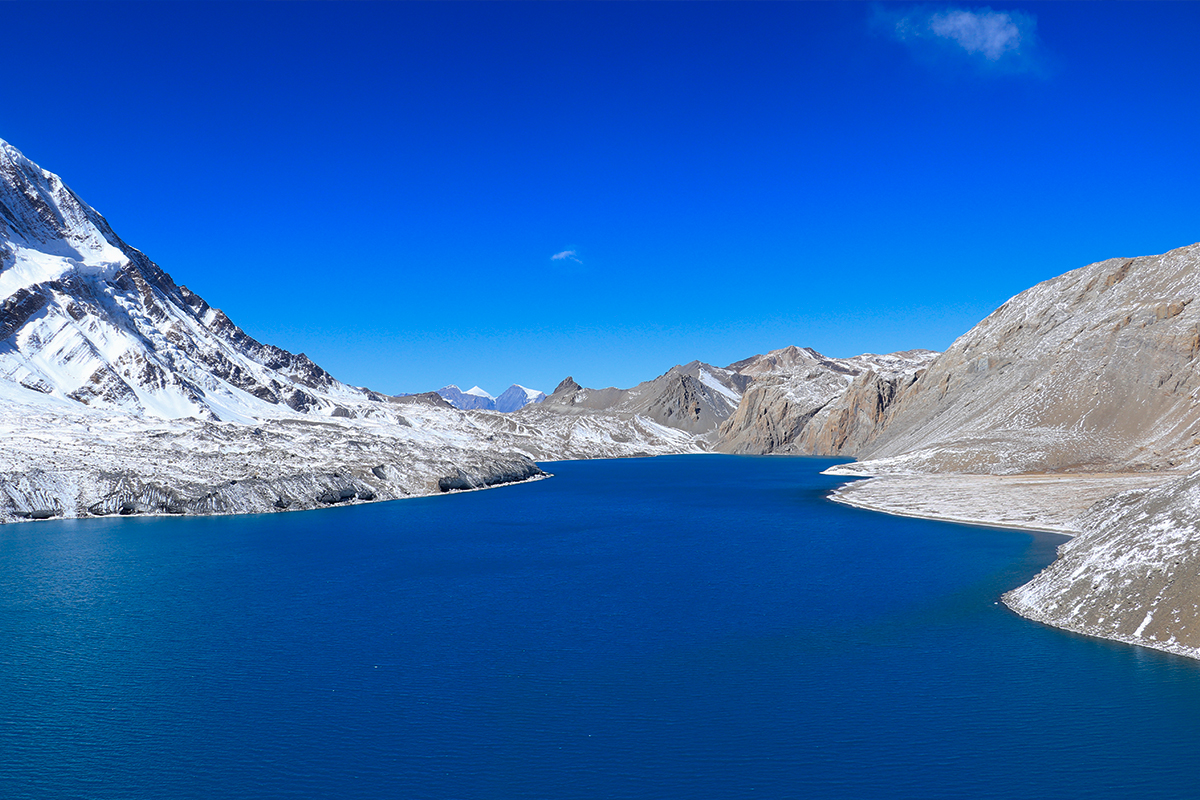
What is the best season for Tilicho Lake Trek?
The best season for trekking to Tilicho Lake is generally considered to be during the Spring (March to May) and Autumn (September to November) months. During these seasons, the weather is typically stable, with clear skies, mild temperatures, and minimal precipitation, making for ideal trekking conditions.
The spring season brings vibrant blooms and lush vegetation to the landscape, while autumn offers crisp, clear days and stunning views of snow-capped peaks. Additionally, these seasons coincide with peak trekking seasons in Nepal, meaning that teahouses along the route are fully operational, and the trails are well-maintained.
However, it's important to note that weather conditions in the Himalayas can be unpredictable, and trekkers should be prepared for potential variations, especially at higher altitudes. Winter trekking (December to February) is possible but may be challenging due to colder temperatures, snowfall, and limited facilities.
Similarly, the monsoon season (June to August) brings heavy rain and landslides, making trekking to Tilicho Lake during this time less advisable.

How cold is Tilicho Lake Trek?
The Tilicho Lake Trek can be quite cold, particularly at higher elevations and during winter times of the year. Daytime temperatures along the trekking route may vary depending on the season and altitude but generally range from cool to moderately cold. In the daytime, temperatures might reach anywhere from just above freezing to around 15-20 ℃ (59-68 ℉), especially in the lower elevations and during the spring and autumn months.
However, it's during the nighttime and at higher elevations where temperatures can drop significantly. Nighttime temperatures can often fall well below freezing, sometimes reaching as low as -10 to -15 ℃ (14 to 5 ℉) or even lower, particularly in the winter months and at altitudes closer to Tilicho Lake itself.
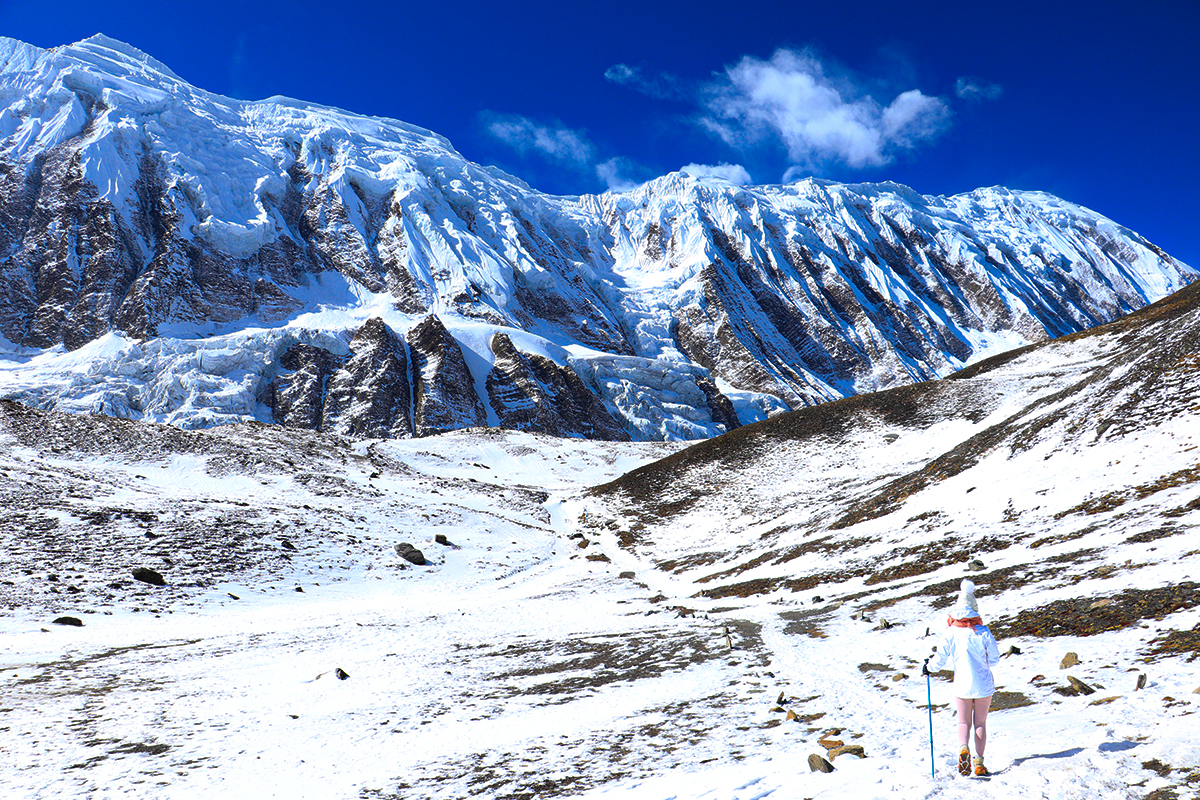
Therefore, trekkers undertaking the Tilicho Lake Trek should be prepared for cold weather conditions, especially during the nighttime and as they ascend to higher altitudes. Packing warm clothing, including insulated layers, a down jacket, gloves, a hat, and a high-quality sleeping bag rated for cold temperatures, is essential to stay warm and comfortable throughout the trek.
What kind of accommodations are available during the Tilicho Lake Trek?
During the Tilicho Lake Trek, trekkers have access to various accommodation options, primarily in the form of tea houses or lodges located in villages along the route. These accommodations offer basic amenities such as beds, blankets, and shared or private bathrooms, providing a comfortable resting place after a day of hiking.
Meals are typically available at the teahouses and lodges, with options ranging from local Nepali cuisine to international dishes. While facilities may be simple, the warmth of hospitality from the hosts and the opportunity to connect with fellow trekkers make the accommodation experience memorable and rewarding. Additionally, for those seeking a more adventurous experience, camping is also an option along the trek, allowing trekkers to immerse themselves fully in the stunning natural beauty of the Himalayas.

What is the highest elevation you will reach during the Tilicho Lake Trek?
The highest elevation reached during the Tilicho Lake Trek is at Tilicho Lake itself, which sits at an altitude of approximately 4,919 meters (16,138 feet) above sea level. This stunning alpine lake is one of the highest lakes in the world and serves as the main highlight and ultimate destination of the trek.
However, you can also choose to travel via Thorong La Pass (5,416 m) and complete the Annapurna Circuit.
Both Tilicho Lake and Thorong La Pass represent significant high points along the Tilicho Lake Trek, offering trekkers breathtaking views of the surrounding Himalayan peaks and a sense of accomplishment at having reached such lofty elevations.

What are the food and water facilities in Tilicho Lake Trek?
Teahouses and lodges along the Tilicho Lake trekking route typically offer a variety of meals to cater to trekkers' needs. Breakfast options often include items such as eggs, toast, porridge, muesli, and pancakes. For lunch and dinner, trekkers can expect a range of dishes, including traditional Nepali cuisine (such as dal bhat - lentil soup with rice and vegetables), noodle dishes, soups, curries, momos (dumplings), pasta, and rice dishes. Many teahouses and lodges also serve snacks and beverages such as tea, coffee, hot chocolate, soft drinks, and alcoholic beverages (though availability may vary).
Trekkers should be cautious about drinking untreated water from streams or taps along the trekking route, as it may not be safe for consumption due to the risk of waterborne illnesses. It's recommended to use water purification tablets, and a water filter, or to purchase bottled water from tea houses or lodges. Most teahouses and lodges offer safe drinking water for purchase, either in bottled form or through filtered and treated water dispensers.
Entrance and Permits for the Tilicho Lake Trek
As you will be trekking in the Annapurna Conservation Area, you will need two different kinds of permits to complete the Tilicho Lake Trek:
- Annapurna Conservation Area Permit (ACAP): Rs. 3,000 per person
- Trekkers Information System Card (TIMS): Rs. 2,000 per person
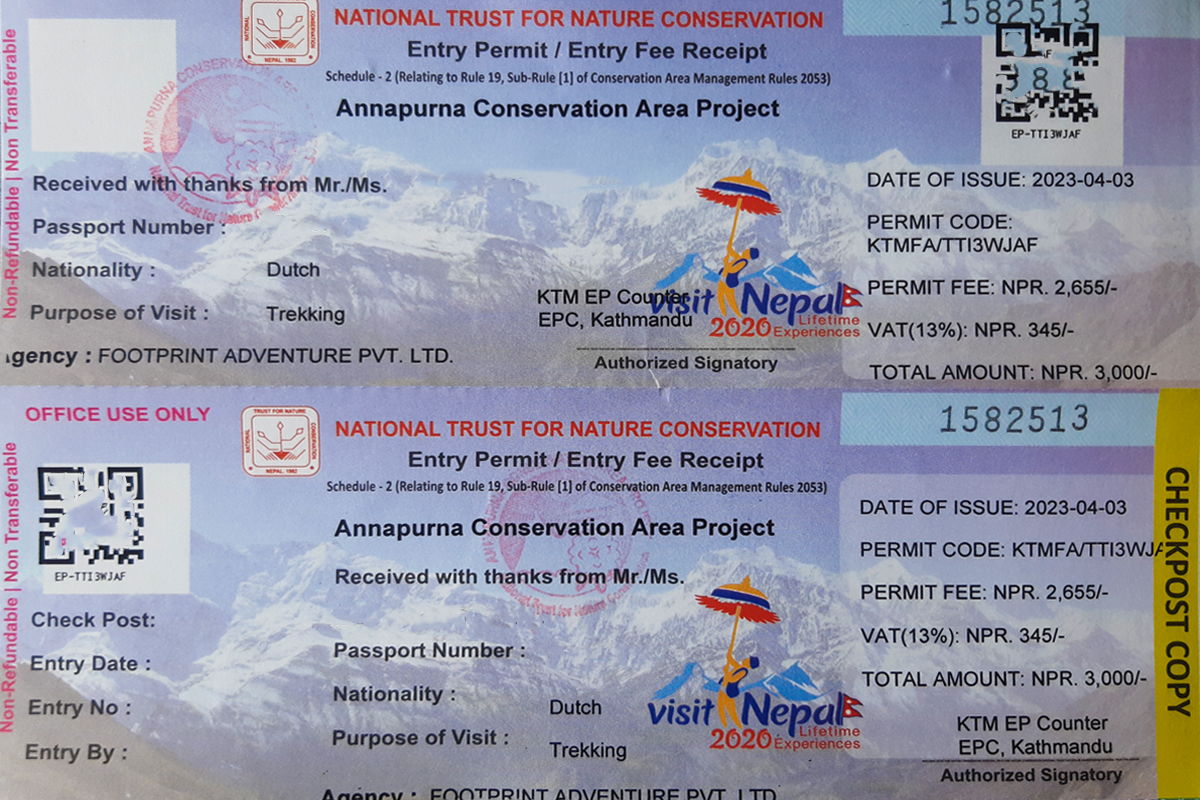
What is the fitness level requirement for the Tilicho Lake Trek?
The Tilicho Lake Trek requires a moderate to high level of fitness due to its challenging terrain, high altitudes, and duration. Trekkers should be prepared for long days of walking, often involving steep ascents and descents, rocky trails, and potentially challenging weather conditions.
Additionally, reaching Tilicho Lake involves hiking to altitudes above 4,000 meters (13,000 feet), which can pose a risk of altitude sickness for those who are not adequately acclimatized.
While prior trekking experience is not necessarily required, it can be beneficial for preparing both physically and mentally for the challenges of the Tilicho Lake Trek. It's recommended that trekkers engage in regular cardiovascular exercise and strength training in the months leading up to the trek to improve stamina, endurance, and overall fitness levels. Training hikes in hilly or mountainous terrain can also help simulate the conditions encountered during the trek.
Moreover, trekkers should be mentally prepared for long days of walking, potential discomfort, and unpredictable weather conditions. A positive attitude, determination, and the ability to pace oneself are essential for completing the Tilicho Lake Trek.
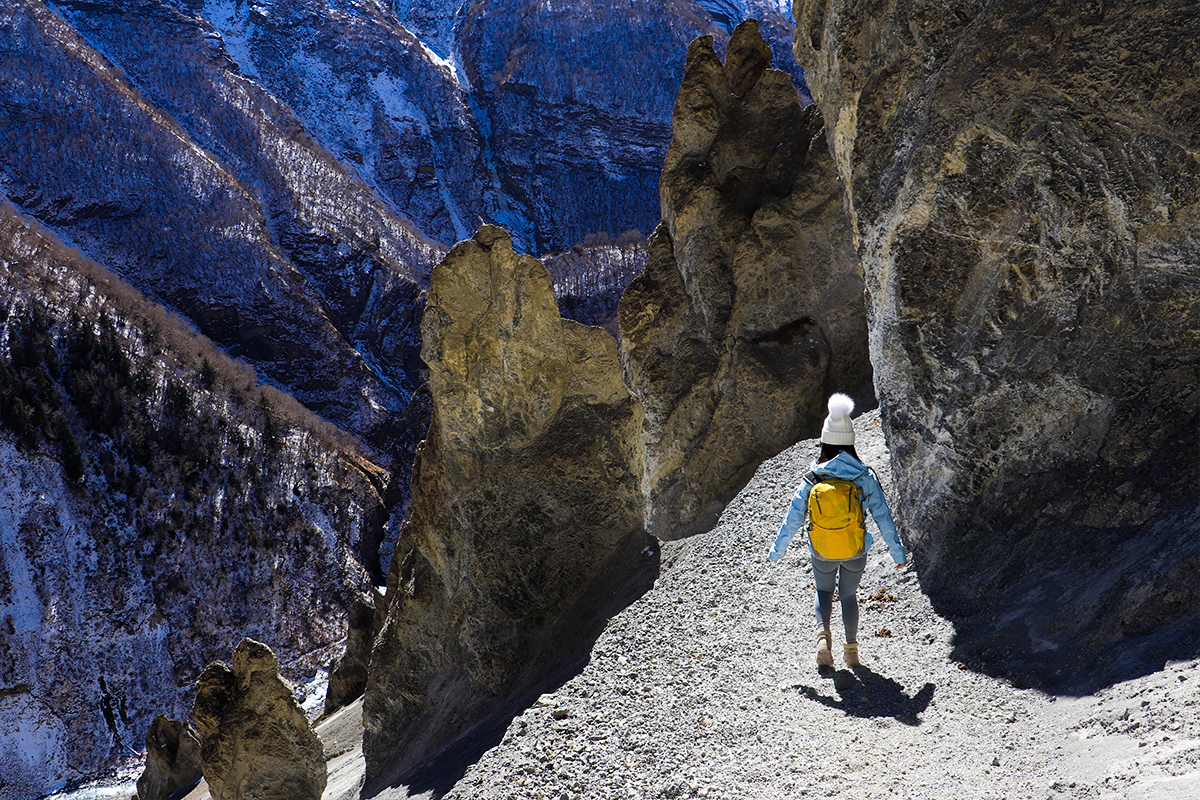
Travel Insurance for the Tilicho Lake
While travel insurance is not mandatory, it is highly recommended for travelers to obtain travel insurance. As the Tilicho Lake trek takes you to the high altitude above 4,919 m above sea level, there are high risks of getting altitude sickness as well as the availability of less medical facilities.
Besides, travel insurance can also help cover you in case of trip cancellations, emergency evacuations, baggage claims and many more.
Overall, having travel insurance can provide essential coverage and peace of mind in case of unexpected emergencies or unforeseen events. It is also very essential to carefully review the policy coverage, exclusions, limitations, and any pre-existing medical condition requirements before purchasing travel insurance for the trek.
Is a solo trip possible on Tilicho Lake?
Solo trekking to Tilicho Lake is indeed feasible, but it requires careful consideration and preparation. Aspiring solo trekkers should possess prior hiking experience, physical fitness, and proficiency in navigation. Safety precautions, such as informing others of the itinerary and carrying emergency communication devices, are essential.
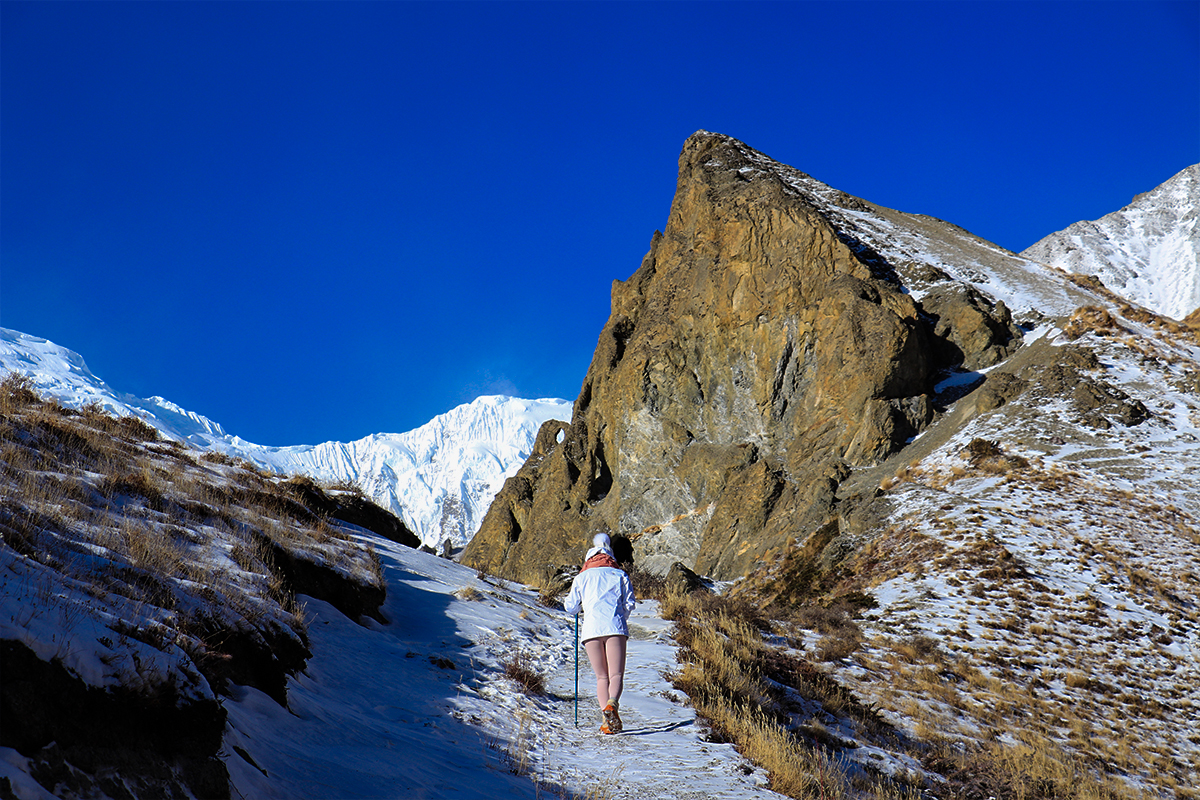
However, According to the new rule of NTB, the Government of Nepal has mandated hiring a guide or a porter from a reputable travel agency to trek at higher altitudes in order to mitigate the potential risks of high altitude sickness for extra safety of the trekkers. Hence, if you book a trek with us, we provide you with an English speaking licensed guide and porter for your trek.
What is the facility of internet, electricity and mobile network?
During the Tilicho Lake Trek, facilities such as internet access, electricity, and mobile network coverage are limited, particularly in remote and higher altitude areas. While some larger villages along the route may offer limited internet access via Wi-Fi for a fee, the connection is often slow and unreliable.
Electricity is generated through solar panels, hydroelectric power, or small generators in teahouses and lodges, but availability may be inconsistent, especially at higher elevations. Charging electronic devices may be possible, but trekkers are supposed to bring their own portable power banks or spare batteries. Mobile network coverage from local carriers like Ncell and Nepal Telecom is occasional, with stretches of no signal, so it's essential to have a local SIM card if relying on mobile communication.
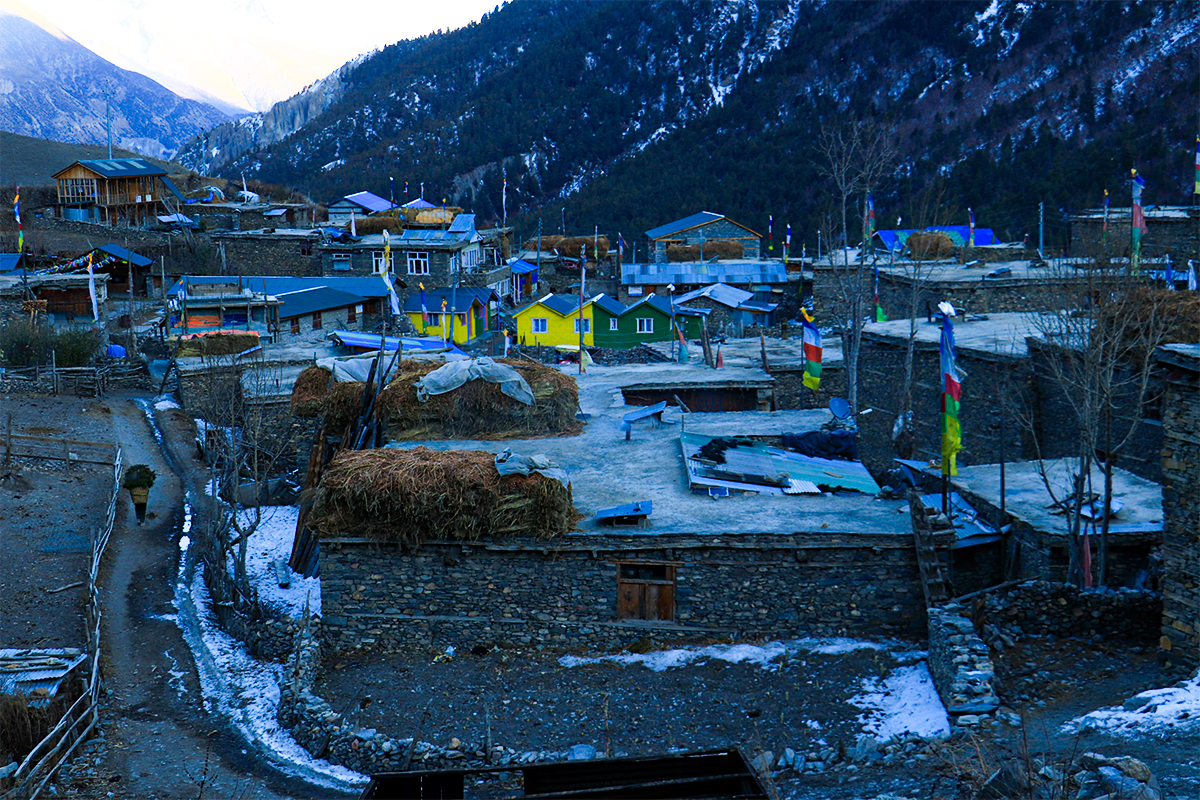
What to pack during your Tilicho Lake Trek?
Due to the moderate to difficult terrain and high altitudes of the Tilicho Lake Trek, it is important to pack light and give priority to necessities. You won't need to carry a hefty load because you'll be spending the nights in tea houses along the route, especially if you're walking without a porter. It is often advised to pack two pairs of the base layer, the second layer, and the outermost layer of clothing.
- Hiking pants and a pair of shorts.
- Trekking tops made of lightweight, packable polyester
- It would be advantageous to have both a raincoat and a waterproof shell jacket. Occasionally, even during the normal trekking season, there's a potential of an unexpected rain dump.
- You must have at least 4-5 pairs of socks and underwear.
- Wear safety gear on your hands, head, neck, and mount to shield your face from the wind.
- Bring along a strong backpack, sunglasses, comfortable sandals, hiking boots, and any other regular medications you may need.
- Your everyday requirements, such as hand sanitizer, sunscreen, toothpaste, toothbrush, sleeping bag, towel, and toilet paper
- The two items that are most useful to have if you want to drink regular water are a water bottle and a water purifier.
For more details about Tilicho Lake Trek Packing List, read more here.
Acute mountain sickness and preventive measures
The Tilicho Lake Trek is considered moderately difficult due to the highest elevation above 4916 m above sea level, there are high possibilities of getting acute mountain sickness at such altitudes. So, the best piece of advice for preventing high altitude sickness is to avoid gaining elevation too quickly and acclimatize after hiking a distance of 1,000 meters. This ensures your body gets used to the rising altitude.
Some Common Symptoms of AMS
- Headache ( both sides and one side of the head)
- Loss of appetite
- Nausea and vomiting sometimes.
- Tiredness and dizziness.
- Feel discomfort while sleeping.
- Increase the heart rate and shortness of breath.
Common Prevention for AMS
- Keep your body hydrated and drink at least 4-5 liters of water every day when you cross above 3,000m
- Take plenty of rest after finishing your daily hike.
- Consume enough food and calories while trekking.
- Wear enough and make your body warm.
- When you feel most of the AMS symptoms, descend to a lower altitude as soon as possible.
- Ascend slowly and acclimatize properly according to the needs of your body.
- Travel with a local guide and travel agency so that they will help you to trail for all the possible consequences.
There aren't many medications like Diamox available that can prevent illness. However, one thing to keep in mind is that you ought to consult with authorized doctors or medical specialists before using any AMS-related medications. Know about Acute Mountain Sickness, here.
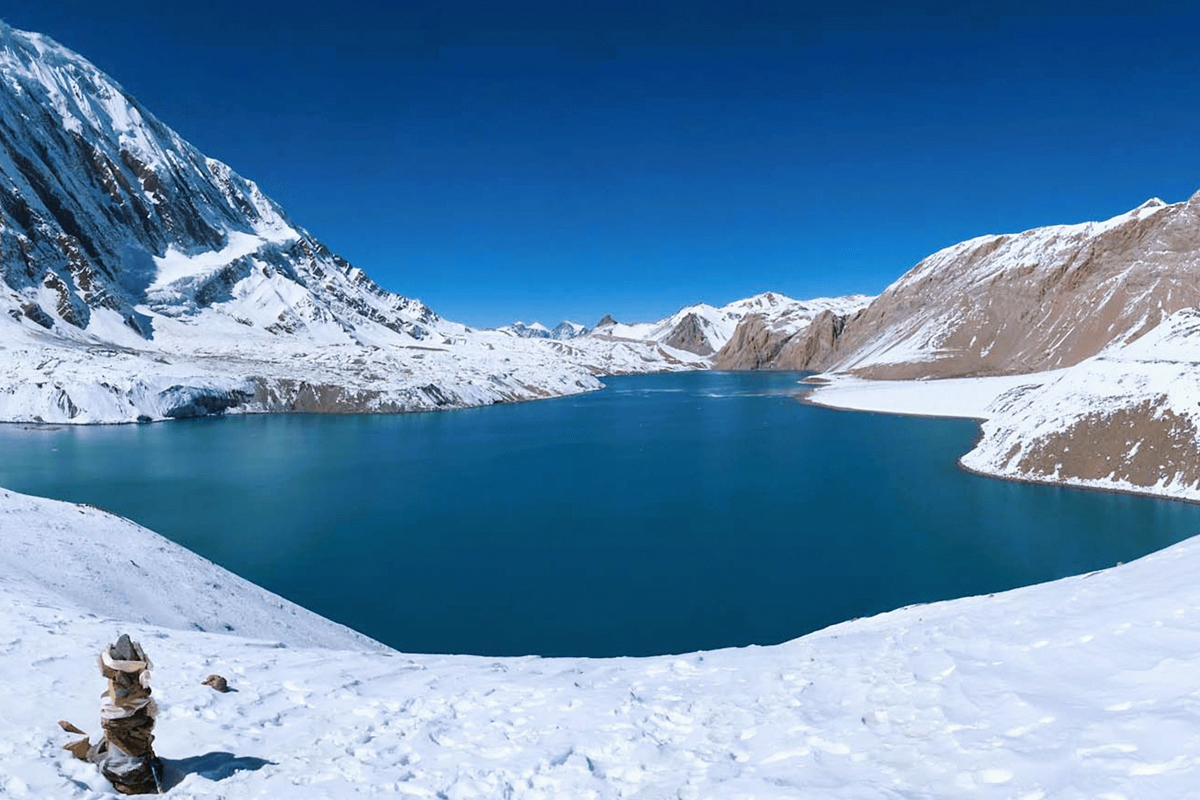
Conclusion
In conclusion, organizing a trek to the Tilicho Lake area in Nepal requires careful consideration of important factors to ensure a memorable and fulfilling experience. Along the trek, trekkers will be treated to breathtaking views of snow-capped mountains, stunning landscapes, verdant valleys, and diverse wildlife, creating an exhilarating journey.
For those with additional time and adventurous spirit, combining the Tilicho Lake Trek with other renowned treks in the Annapurna region, such as the Annapurna Base Camp Trek or the Poonhill Trek, is a rewarding option.
Moreover, the Khopra Trek and the Nar Phu Valley Trek offer exciting alternatives for trekkers seeking off-the-beaten-path adventures. Should you have any questions or need further assistance in planning your Tilicho Lake Trek, please don't hesitate to reach out to us. We hope this guide will help you navigate the various aspects of the Tilicho Lake Trek and prepare you for an unforgettable journey of a lifetime.



.jpg)













